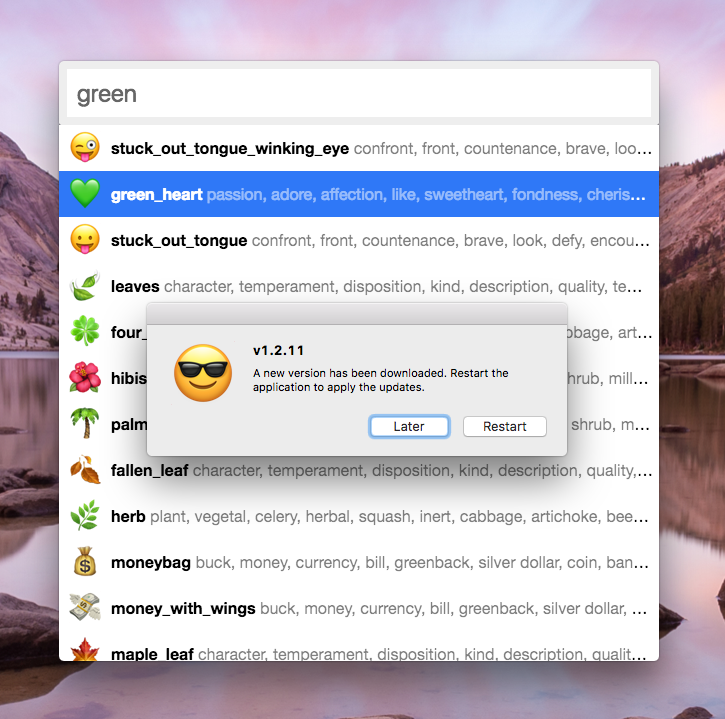Electron 有一个新网站 electronjs.org! 我们已经用 Node.js webserver 替换了静态的 Jekyll 站点,它为我们提供了国际化站点的灵活性,并为更多令人兴奋的新功能铺平了道路。
🌍 翻译
我们已启动网站国际化进程,旨在让全球开发者都能接触到 Electron 应用开发。 我们正在使用一个名为 Crowdin 的本地化平台,该平台与 GitHub 集成,可在内容被翻译成不同语言时自动打开和更新拉取请求。

尽管我们迄今为止一直在低调推进这项工作,但已有超过 75 名 Electron 社区成员发现了该项目,并加入到网站国际化,将 Electron 文档翻译成 20 多种语言的工作中。 我们看到来自世界各地人们的每日贡献,其中法语、越南语、印度尼西亚语和中文的翻译工作走在前列。
要选择您的语言并查看翻译进度,请访问 electronjs.org/languages

如果您会多种语言并有意帮助翻译 Electron 的文档和网站,请访问 electron/electron-i18n 代码仓库,或直接在 Crowdin 上开始翻译工作,您可以使用GitHub账号登录该平台。
目前在 Crowdin 上的 Electron 项目启用了21种语言。 添加更多语言的支持很简单,因此如果您有兴趣帮助翻译但未在列表中看到您的语言,请 告知我们,我们将启用该语言。
Raw Translated Docs
If you prefer to read documentation in raw markdown files, you can now do that in any language:
git clone https://github.com/electron/electron-i18n
ls electron-i18n/content
App Pages
As of today, any Electron app can easily have its own page on the Electron site. For a few examples, check out Etcher, 1Clipboard, or GraphQL Playground, pictured here on the Japanese version of the site:

There are some incredible Electron apps out there, but they're not always easy to find, and not every developer has the time or resources to build a proper website to market and distribute their app.
Using just a PNG icon file and a small amount of app metadata, we're able to collect a lot of information about a given app. Using data collected from GitHub, app pages can now display screenshots, download links, versions, release notes, and READMEs for every app that has a public repository. Using a color palette extracted from each app's icon, we can produce bold and accessible colors to give each app page some visual distinction.
The apps index page now also has categories and a keyword filter to find interesting apps like GraphQL GUIs and p2p tools.
If you've got an Electron app that you'd like featured on the site, open a pull request on the electron/electron-apps repository.
One-line Installation with Homebrew
The Homebrew package manager for macOS has a subcommand called cask that makes it easy to install desktop apps using a single command in your terminal, like brew cask install atom.
We've begun collecting Homebrew cask names for popular Electron apps and are now displaying the installation command (for macOS visitors) on every app page that has a cask:

To view all the apps that have homebrew cask names, visit electronjs.org/apps?q=homebrew. If you know of other apps with casks that we haven't indexed yet, please add them!
🌐 A New Domain
We've moved the site from electron.atom.io to a new domain: electronjs.org.
The Electron project was born inside Atom, GitHub's open-source text editor built on web technologies. Electron was originally called atom-shell. Atom was the first app to use it, but it didn't take long for folks to realize that this magical Chromium + Node runtime could be used for all kinds of different applications. When companies like Microsoft and Slack started to make use of atom-shell, it became clear that the project needed a new name.
And so "Electron" was born. In early 2016, GitHub assembled a new team to focus specifically on Electron development and maintenance, apart from Atom. In the time since, Electron has been adopted by thousands of app developers, and is now depended on by many large companies, many of which have Electron teams of their own.
Supporting GitHub's Electron projects like Atom and GitHub Desktop is still a priority for our team, but by moving to a new domain we hope to help clarify the technical distinction between Atom and Electron.
🐢🚀 Node.js Everywhere
The previous Electron website was built with Jekyll, the popular Ruby-based static site generator. Jekyll is a great tool for building static websites, but the website had started to outgrow it. We wanted more dynamic capabilities like proper redirects and dynamic content rendering, so a Node.js server was the obvious choice.
The Electron ecosystem includes projects with components written in many different programming languages, from Python to C++ to Bash. But JavaScript is foundational to Electron, and it's the language used most in our community.
By migrating the website from Ruby to Node.js, we aim to lower the barrier to entry for people wishing to contribute to the website.
⚡️ Easier Open-Source Participation
If you've got Node.js (8 or higher) and git installed on your system, you can easily get the site running locally:
git clone https://github.com/electron/electronjs.org
cd electronjs.org
npm install
npm run dev
The new website is hosted on Heroku. We use deployment pipelines and the Review Apps feature, which automatically creates a running copy of the app for every pull request. This makes it easy for reviewers to view the actual effects of a pull request on a live copy of the site.
🙏 Thanks to Contributors
We'd like to give special thanks to all the folks around the world who have contributed their own time and energy to help improve Electron. The passion of the open-source community has helped immeasurably in making Electron a success. Thank you!
















